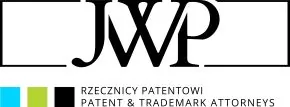- within Intellectual Property topic(s)
- in Europe
- in Europe
- in Europe
- in Europe
- in Europe
- in Europe
- in Europe
- in Europe
- in Europe
- with readers working within the Retail & Leisure industries
Our colleagues Helena Gajek and Malgorzata Furmanska won the case before the General Court in Luxembourg related to invalidity proceedings concerning the bad faith application.
The case was related to the trademark ENTEROSGEL, published in October 2006, for medical products. In 2016 the applicant applied for a declaration of invalidity, claiming that the predecessor of the trademark owner, acted in bad faith when filing a trademark application. The application for a declaration of invalidity was directed against all the goods covered by the contested mark.
Long story short the applicant claimed that the predecessor in law to the intervener, was not allowed to designate the European Union in respect of the contested mark because it was not involved in the development of the product named Enterosgel and secondly, that the predecessor was not the first to apply for the trademark Enterosgel because the Russian "equivalent" trademark application had already been filed on 18 January 2002 by the entity legally connected to the applicant. In 2018 the Cancellation Division of EUIPO rejected the application for a declaration of invalidity in its entirety. The applicant filed an appeal the same year but it was also dismissed. The Board of Appeal then rejected the arguments put forward by the applicant, taking the view that they were not capable of showing that there was bad faith on the part of the trademark owner's predecessor.
The case was then brought to the General Court of Luxembourg which dismissed the action and order the applicant to pay the costs.
The Court confirmed that: in order to claim a bad faith, a dishonest intention on the part of the trademark owner must be determined, by reference to objective circumstances. In order to assess bad faith all circumstances are relevant, regardless of whether the use of the trademark took place within the EU or outside the EU if properly supported by evidence of prior marks or prior genuine use. The Court also pointed out that patents and documents showing the development of the product or license agreements as well as granted marketing authorization, or even the pictures of the product packaging, do not constitute evidence of offering, selling, or promoting the trademark.
The content of this article is intended to provide a general guide to the subject matter. Specialist advice should be sought about your specific circumstances.


